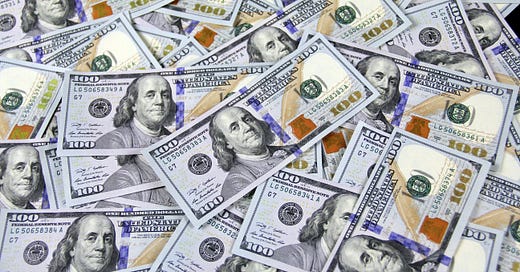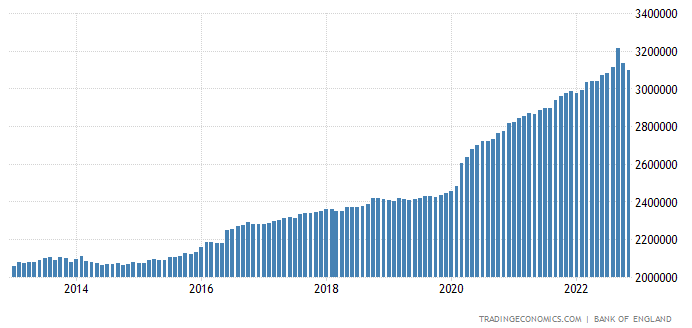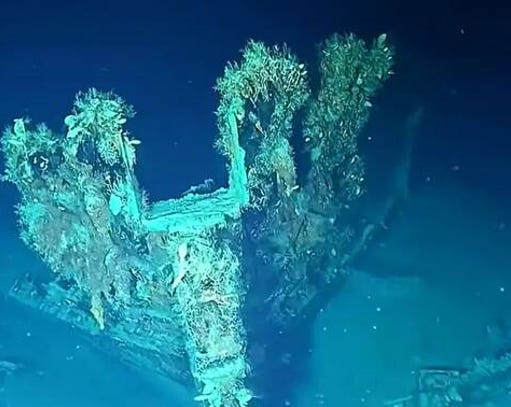It’s just money. It’s made up. Pieces of paper with pictures on it so we don't have to kill each other just to get something to eat. It's not wrong. And it's certainly no different today than it's ever been.
John Tuld (played by Jeremy Irons) in Margin Call
This week was the annual meeting of the World Economic Forum in Davos, Switzerland. During the event, John Kerry, the US special presidential envoy for climate was very blunt about what was needed to address the climate crisis.

But what is money? In the capitalist system, money is nothing but a coordination mechanism that determines where scarce resources (labor, commodities, time) are allocated and who gets to use them.
What John Kerry is really saying is that money has to be diverted from other uses to be invested in actions that would fight climate change. It’s all fine, but this is the discussion that politicians are never willing to entertain: Fighting climate change means making sacrifices. Who should make sacrificies? Rich countries that have polluted for centuries and that enjoy high standards of living, or people in developing countries that only consume a fraction of the energy used by people in developed countries? This might sound obvious, but look at who is asked to make efforts, and you might be surprised…
Those who are not making any sacrifices for sure are the Davos participants. It’s hard to listen seriously to anything coming from this event when you see how these people travel.


Someone who thinks his own people have absolutely zero understanding of money is the UK Chancellor of the Exchequer, Jeremy Hunt. Even though the following video looks like a parody, it’s not. In it, Jeremy Hunt explains all the reasons why inflation is high in the UK. Just watch.

Readers of this newsletter would have noticed that Hunt omits the #1 reason prices in the UK have gone up, like in the rest of the world: The quantity of money that was printed during the Covid pandemic. The quantity of British Pounds outstanding has gone up by more than 25% since March 2020.
Using the Bank of England’s own inflation calculator, it turns out that the cumulative inflation between the end of 2019 and the end of 2022 is… 17.8%. But don’t worry, according to the Chancellor of the Exchequer, money printing has nothing to do with this!
Not but really, what is money? The money in your bank account is just a number in a database, that’s it. It’s an accounting system. Making changes to the accounting system, for example by printing money, doesn’t create more resources, it just reduces the value of money.

Elon Musk explains it in his own way. He knows a thing or two about money: He co-founded PayPal, and until recently he was the richest man in the world.

One country that is considering accepting other currencies for its oil is none other than Saudi Arabia. Following US and European sanctions on Russia, it was to be expected that countries would look to diversify their currencies and payment systems.

Even though Bitcoin has been making a comeback this year, with a rise of about 30% since the beginning of the year, someone who still doesn’t want to hear about it is JP Morgan CEO, Jamie Dimon. He has never been a fan.
What is sad, though, is that it seems he has never been briefed on the open-source nature of the Bitcoin protocol. Anyone can audit the Bitcoin code and confirm that there will never be more than 21 million, but he seems completely unaware of this fact.

Finally, the quote at the beginning of this newsletter is from this scene in Margin Call.
The Future is Already Here
Last week, I wrote about ChatGPT, the mind-blowing AI chatbot that was released back in December 2022. Now imagine combining ChatGPT with the robots from Boston Dynamics. Watch their latest video showing off what their robots can do. Robots will always be our friends, right?
AI can also generate pictures. You can ask AI services like DALL-E 2 to generate any images you want. Click on the thread below to see how AI generated pictures of women supposed to symbolize their countries. Pretty cool!
Scam of the Week
You may have heard or read that environmental activist Greta Thunberg was arrested earlier this week when she was protesting the extension of a coal mine in Germany. Based on footage released shortly after her arrest, it seems the whole thing was staged.
A few days later, she was in Davos at the World Economic Forum. In case you were wondering.
Podcast of the Week
The Peter Attia Drive | Optimizing life for maximum fulfillment | Bill Perkins. Great discussion on money, life, and how to make the most out of it.
Guest Contributor of the Week: Stéphane Mellinger
This week, Vincent’s Corner is welcoming Stéphane Mellinger as guest contributor. I have known Stéphane for 17 years, and he is a real history buff. I asked him if he could write a story about money, and he delivered. Enjoy his post on money… stuck at the bottom of the ocean!
When ‘Pirates of the Caribbean’ Meets Titanic
Think about a treasure. An old-fashioned treasure made of an estimated 200 tons of gold, silver, emeralds, cannons, and porcelain dishes, worth close to $20 billion. What if you knew where it was but couldn’t retrieve it because of a legal battle? Frustrating, right?
The story begins with the San José galleon, a 60-canon ship sailing in the early 18th century between the Caribbean and Spain, bringing riches from the South American mines to the old continent. The San José and its fellow companion the San Joaquin left the Panamanian port of Portobelo towards La Havanna, where goods used to transit before being shipped to Spain.
But the trip didn’t go according to plan. The two galleons were ambushed by four Royal Navy ships: The Kingston, the Portland, the Vautour and the Expedition. The ships engaged in battle on the night of June 8th, 1708, 17 km off the coast of Carthagena. The San José sunk within minutes of being hit, while the San Joaquin managed to flee. Out of the six hundred men on board, only eleven survived this tragedy.
There is no record or list of what the San José was transporting. So, how do we know what was on it? In finance, there is a valuation method frequently used to evaluate the value of a company: You look at the value of comparable companies. Inspired by the “comparable transaction method,” historians assumed that the San José contained a cargo similar to that of the San Joaquin which, unlike its unfortunate companion, made it safely to Spain.
Full disclosure: Estimates of the value of the treasure vary between a few billion dollars up to close to $20 billion. Even if it’s just a few billion dollars, I am still interested! There is little chance, however, that either you, I, or anybody vould benefit from this amazing fortune, at least for now!
As you can imagine, such a treasure attracted attention. At least four parties have claimed the treasure to be, totally or partially, rightfully theirs:
Spain claims that because the ship was built in the port of Mapil, Spain, it is the historical owner of the wreck and, of course, of its freight.
Bolivia argues that the precious metals were extracted from Bolivian mines by the ancestors of a group of its native population, the Qhara Qharas.
American company See Search Armada, with the support of the US Department of Justice, claims it was first to locate the sunken ship in the early 1980s and, therefore, is entitled to a share of amy treasure that would be retrieved.
Columbia has a simple argument: The wreck is in its territorial waters. A few years ago, the Columbian navy even conducted a submarine operation during which it filmed the remains of the ship and presented to the public a video (inspired by James Cameron’s Titanic) of what it called its “national treasure.”
Given this imbroglio, it is unlikely anyone would spend money to go and retrieve the treasure. It’s too bad, don’t you think? It would be such a cool story! Perhaps what is needed is international cooperation under the aegis of UNESCO to organize an expedition to go and retrieve this piece of human history. I know that sounds naïve, but I am an incurable optimist.
But what if someone went there, discreetly, with a private submarine and stole the treasure? Would anyone notice? Food for thought…












